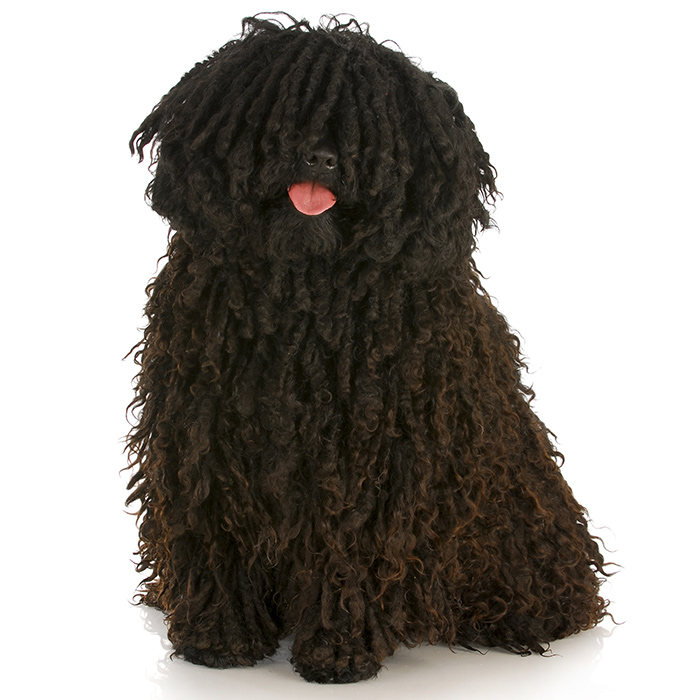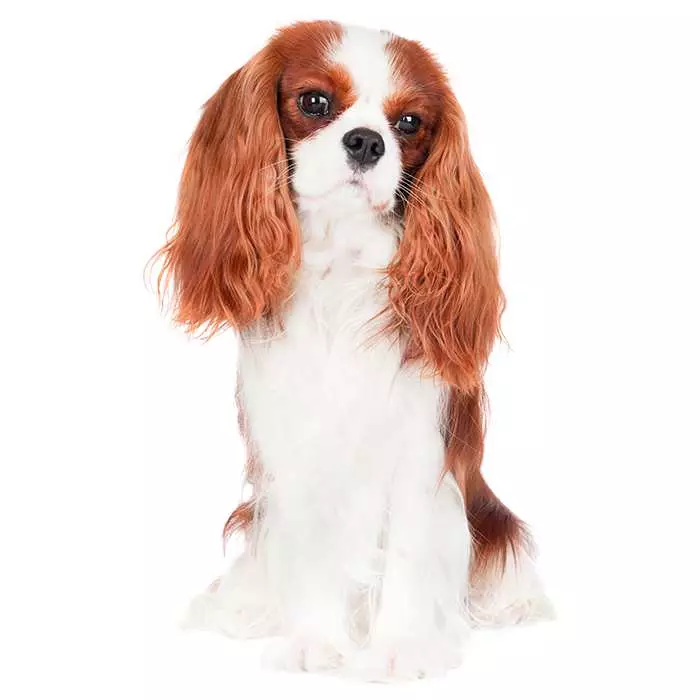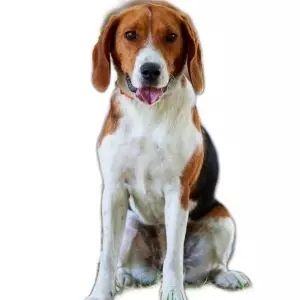Australian Shepherd
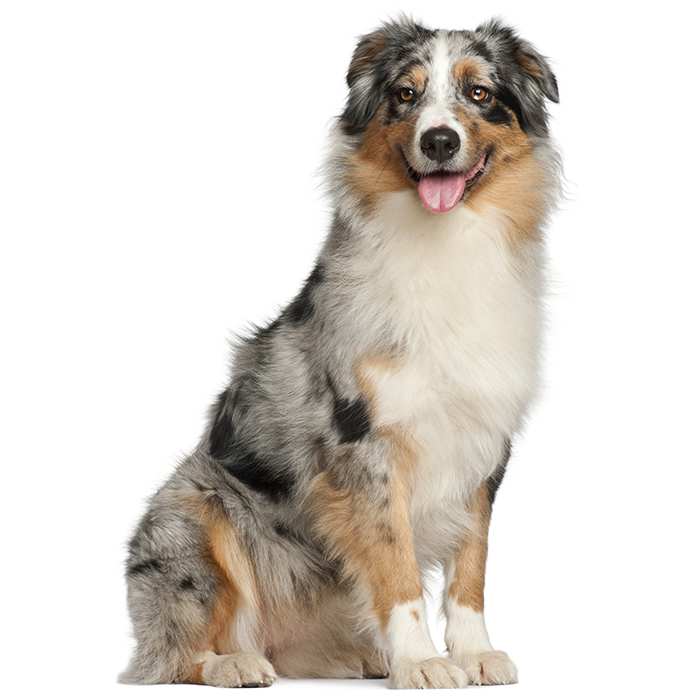

| Recommended for | Active families |
| Breed Classification | Herding group |
| Other names | Aussie |
| Lifespan | 13-15 years |
| Size | Medium |
| Temperament | Protective, alert, caring, eager to please |
| Intelligence | High |
| Tendency to bark | Usually quiet but can bark a lot if he finds himself a job as watchdog |
| Maintenance Level | Medium |
| Health Risk | In the lower risk category for developing health issues, hence one of the most affordable breeds to insure. |
Insuring an Australian Shepherd?
Get award-winning cover with more benefits and up to 80% of eligible vet bills reimbursed. Find out about your cover options.
Get a quick quote
Is this breed right for you?
Try our breed selector quiz to find out your best matching breed!
Insuring an Australian Shepherd?
Get award-winning cover with more benefits and up to 80% of eligible vet bills reimbursed. Find out about your cover options.
Get a quick quote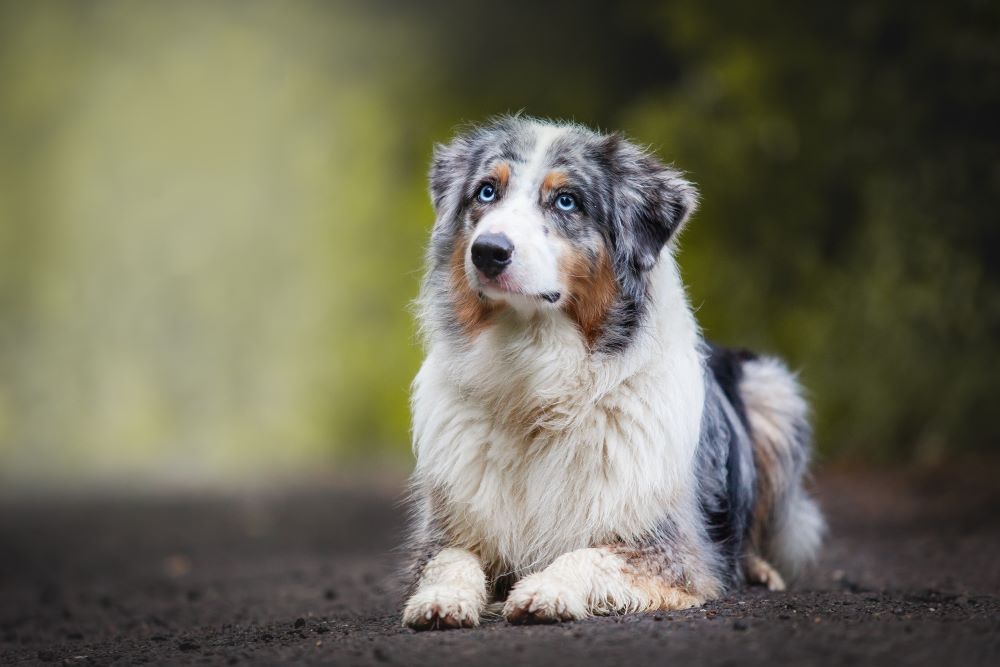
Breed history of Australian Shepherds
Even though this dog is called an Australian Shepherd it is not actually an Australian breed. The breed has its origins in the Pyrenees Mountains between France and Spain. These Pyrenean shepherd dogs came to Australia in the 1800’s with the many Basque shepherds who migrated here to try their luck in the vast, virgin pastures of the interior.
During their long sojourn in Australia, the Basques refined their dogs through judicious crosses with Australia’s British imports, including Collies and Border Collies. After building up their flocks, the intrepid Basques left Australia for the greener pastures of California. Californian ranchers admired the Basques’ herding dogs and assumed they were an Australian breed—thus the misleading name of Australian Shepherd.
The strong herding instinct of the dog continued to be developed by cattle ranchers who put the dog to work herding cattle on farms and ranches across America. Today they are also used as drug detector dogs and for search and rescue efforts all around the world.
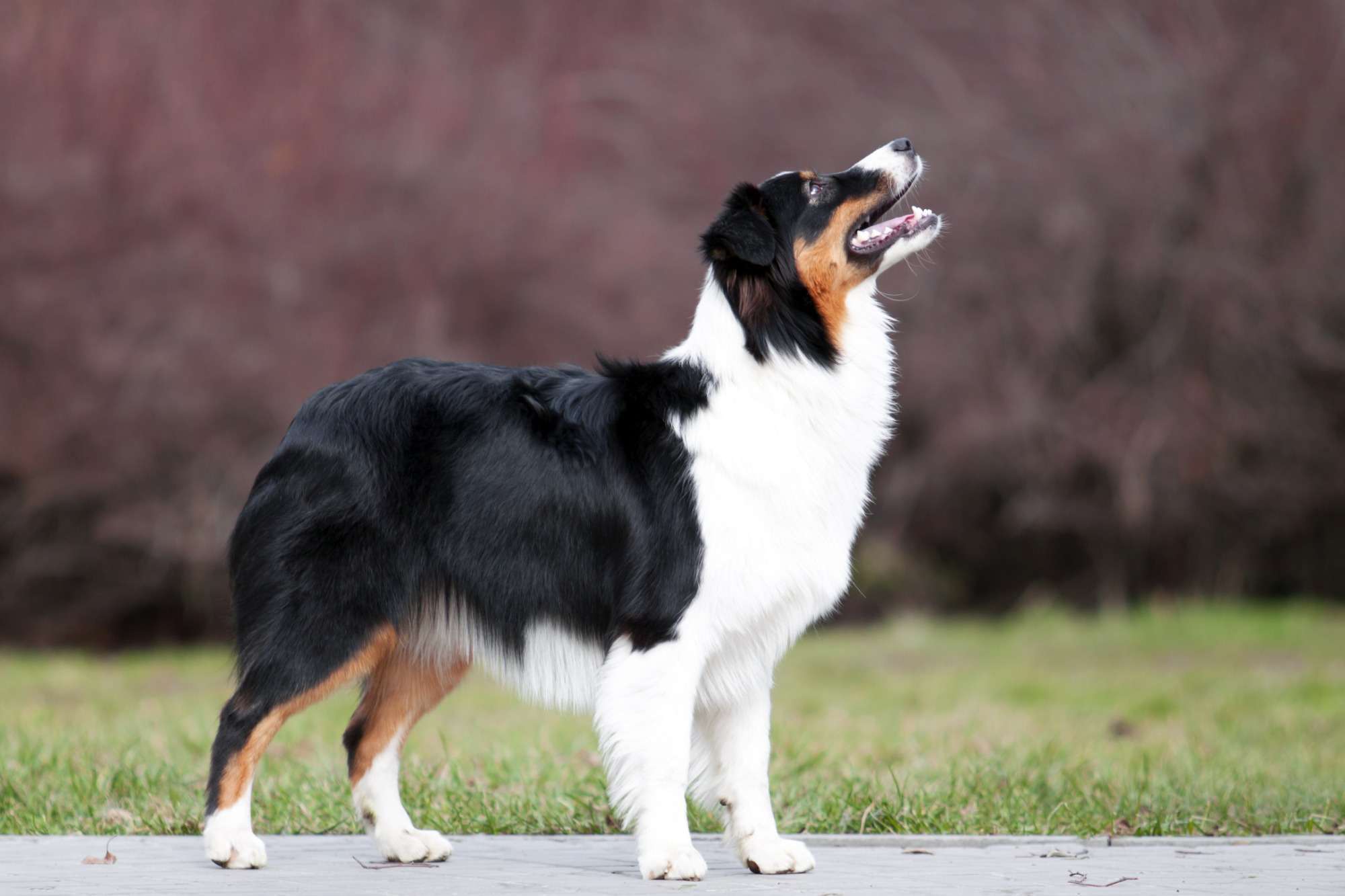
Physical description of Australian Shepherds
The Australian Shepherd has a coat that is straight to slightly wavy and they have a naturally bobbed tail.
Aussies come in a variety of colours including blue merle, black, red merle and solid colours with or without white markings. As the puppy begins to age their coat usually becomes darker.
Their eyes can be a variety of colours including blue merle, red merle, red, and black. Their eyes may differ from each other in colouration.
| Weight range | Male 23 to 29 kg, female 14 to 20 kg |
| Height range | Male 50 to 58 cm, female 45 to 53 cm |
| Colours | Blue merle, black, red merle and solid red with or without white markings and tan points |
| Coat length | Long |
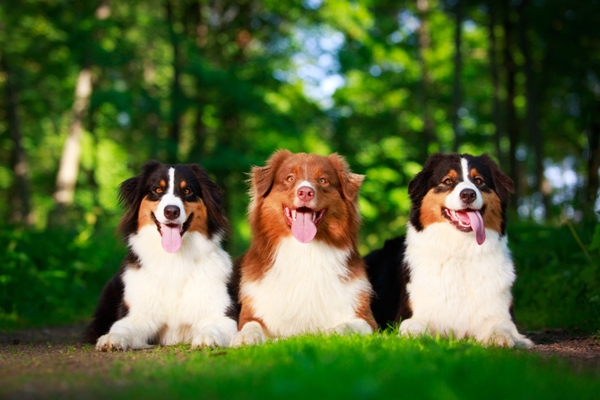
Australian Shepherd personality and temperament
Australian Shepherds are very loyal and affectionate to their families; they love the company of people and crave human contact.
They can have a variety of temperaments from very outgoing to quite shy around new people, but they tend to be a bit reserved initially with strangers who are not part of their family.
Aussies are bred to work and have a natural herding instinct. While they are not aggressive, they are good watch dogs.
They are very intelligent dogs who love having things to do, and will become bored if they don’t get sufficient stimulation and/or activity.
It is recommended that you find out as much as you can about the temperament of the parents before deciding on your Aussie.
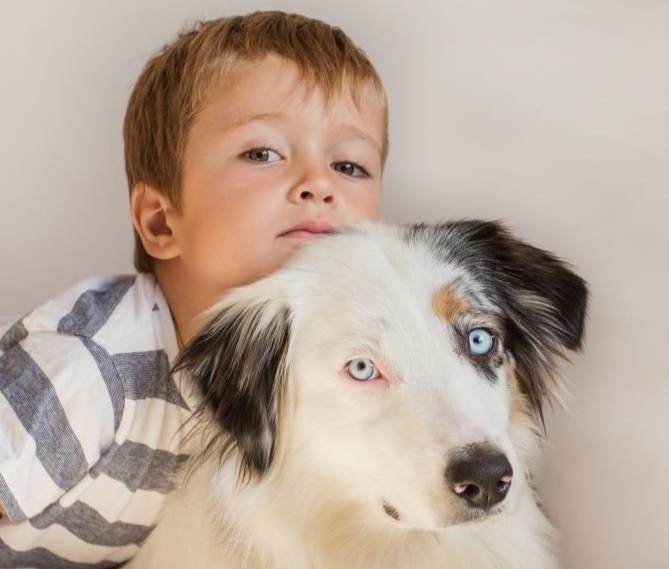
Australian Shepherds with kids and other pets
Australian Shepherds are generally very good with young children and okay with other dogs.
However, they have a natural herding instinct that may translate into an irresistible impulse to herd anything, including cars, bikes, birds, dogs and kids.
Their herding instinct does not always go well with other small animals kept as household pets.
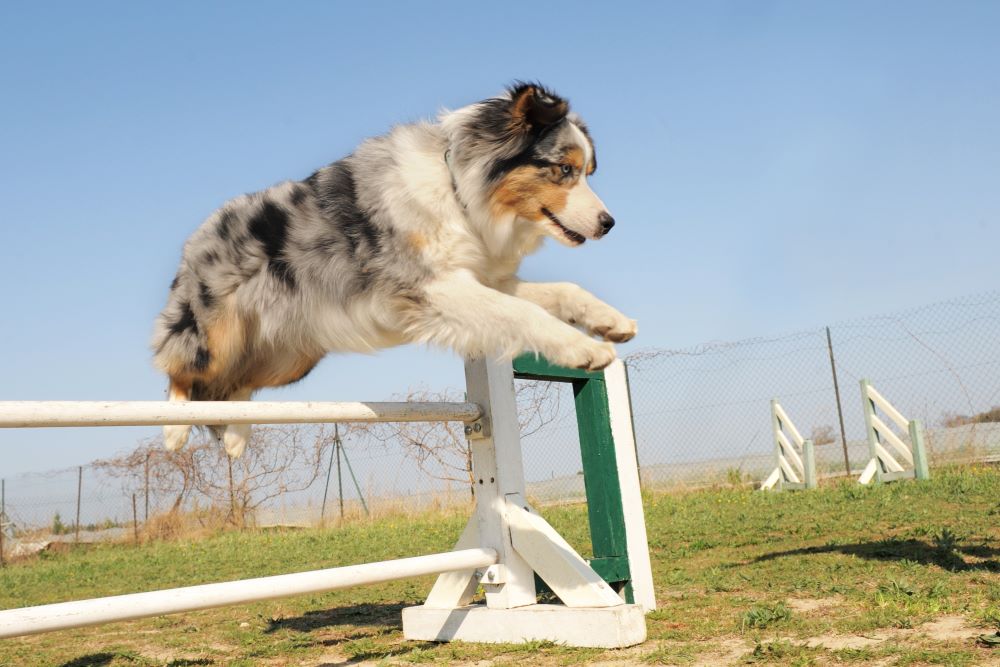
Australian Shepherd training and exercise
Australian Shepherds are high-energy, athletic dogs who require plenty of exercise on a daily basis to prevent them from becoming bored. They are the perfect dog for an active individual or family as they love to have something to do, whether that’s going for a run or hike, playing fetch or fun games including hide and seek, fly-ball and agility activities.
Aussies bond closely with their owners and love to accompany them on long walks, or better yet, hikes. Once their skeletal systems are fully formed, they can make a great running companion. The best course, however, is to give the Aussie a real job, whether that is herding livestock or competing in canine events such as obedience, herding or agility trials.
One of the ultimate working dog breeds, if you don’t give them a job to do, they may just find themselves one. This drive can make Aussies too much for a sedentary pet owner to handle. At minimum, they should have a large, fenced-in yard to run around in for at least an hour or two daily.
This is a breed that needs set boundaries, so early socialisation and obedience training are both essential. Their herding instinct can in fact be quite dangerous if they are not well trained, as there is a risk of them running into the road to chase cars or harm young children while trying to round them up.
One of the most common reasons Aussies end up in pounds and rescues is owners’ inability to constructively channel their boundless energy through training. Fortunately, their loyalty combined with their intelligence and high energy makes them relatively easy to train. However, they can also have their own minds, so persistence and mixing things up a bit and teaching them new tricks is often the way to go.
| Energy level | Very high |
| Exercise requirements | Very high |
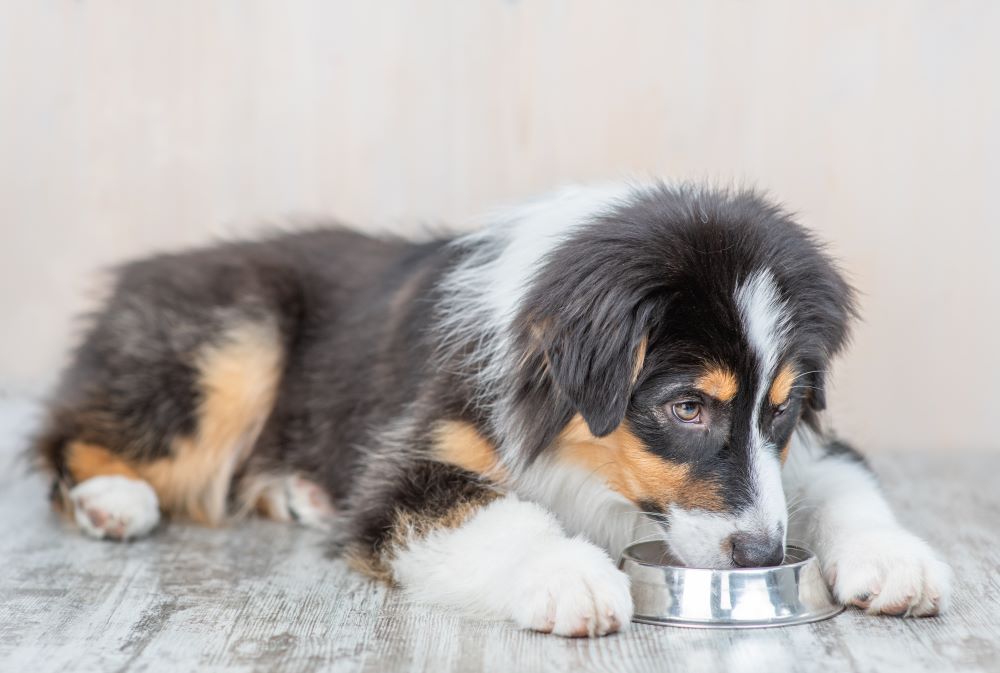
Australian Shepherd feeding and nutrition
The Australian Shepherd should do well on a high-quality dog food appropriate to the dog’s age (puppy, adult, or senior).
Some dogs are prone to getting overweight, so monitor your dog’s calorie consumption and weight level.
Treats can be an important aid in training, but should be used in moderation if weight gain is a concern.
Check with your vet if you have any concerns about your dog’s weight or diet.
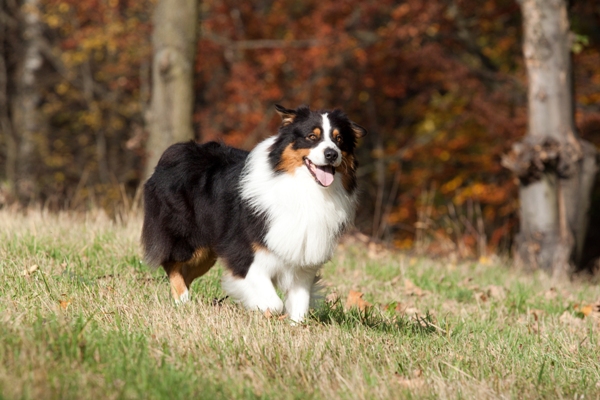
Australian Shepherd care and grooming
Australian Shepherds have a waterproof, double-layer coat that tends to shed a fair bit, so regular brushing is recommended. In general, weekly brushing sessions will suffice, but twice a year they shed heavily due to seasonal changes in the weather, and more work will be required at these times.
During shedding season an undercoat rake can be used every two or three days to remove the abundant dead hair, followed by a clean up with a wire brush.
Aussies are often working and/or playing outdoors, so it’s not unusual for them to come inside dirtier than when they left. But they require a bath only occasionally, unless they’ve gotten into a particularly messy situation.
Health issues for Australian Shepherds
While Aussies are generally healthy dogs they can suffer from a number of illnesses and diseases that include:
- Hip dysplasia is a genetic condition that occurs when the bones and joints do not fit together properly. As this conditions can cause arthritis later in the dog’s life, it is essential to begin treatment as soon as possible.
- Genetic eye problems can occur in the Aussie, including Progressive Retinal Atrophy that is cause be a recessive gene that can result in blindness. This disease may not be evident until later in a dog’s life. Collie Eye Anomaly (CEA) is also a hereditary disease that can be diagnosed in the Australian Shepherd. Juvenile cataracts are also a serious defect that can lead to blindness. Colobomas is also a genetic eye problem where part of the structure of the eye is missing. Puppies can have their eyes examined by a veterinary ophthalmologist to determine defects.
- Multiple Drug Sensitivity (MDS) can also affect Australian Shepherds. MDS occurs when dogs are susceptible to having fatal reactions to common veterinary drugs including heartworm prevention medicine. There is a simple vet test that can determine whether the dog has MDS.

- Epilepsy is a neurological disorder characterised by seizures that have no known cause. A seizure is a sudden surge in the electrical activity of the brain causing signs such as twitching, spasms, shaking, tremors and/or convulsions. Fairly common in certain breeds, a genetic basis is suspected. Anti-seizure medications can be prescribed for affected dogs.
- Congenital Deafness can occur in Aussies; those with white or merle coats are more susceptible to the condition. This deafness occurs when the blood supply to the cochlea degenerates leading to the death of the nerve cells. This defective gene is inherited.
Not all conditions are covered by Pet Insurance. For details of Bow Wow Meow Pet Insurance cover, refer to the Product Disclosure Statement.
What do Australian Shepherd owners claim for the most?
- Gait Abnormality
- Dermatitis
- Wound
- Mass Lesion
- Seizure Disorder
Thinking about insuring an Australian Shepherd
Thinking about insuring an Australian Shepherd
Learn moreThinking about insuring an Australian Shepherd
Learn moreFree engraved pet ID tag on sign up3
Customer Satisfaction
21 day cooling off
Easy to use Pet Portal

GapOnly® in vet claims
MORE INFORMATION
Australian Working Dog Recue: http://www.workingdogrescue.com.au/
Australian Shepherd Association of NSW: http://www.australianshepherds.org.au/
Australian Shepherd Club of VIC: http://www.australianshepherd.org.au/

